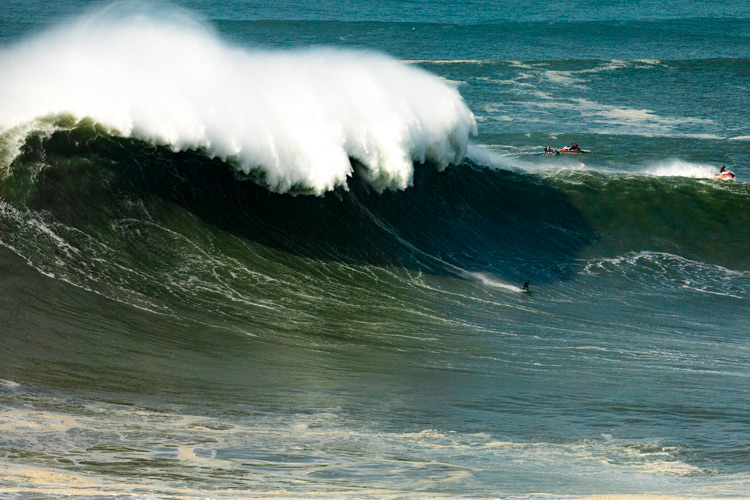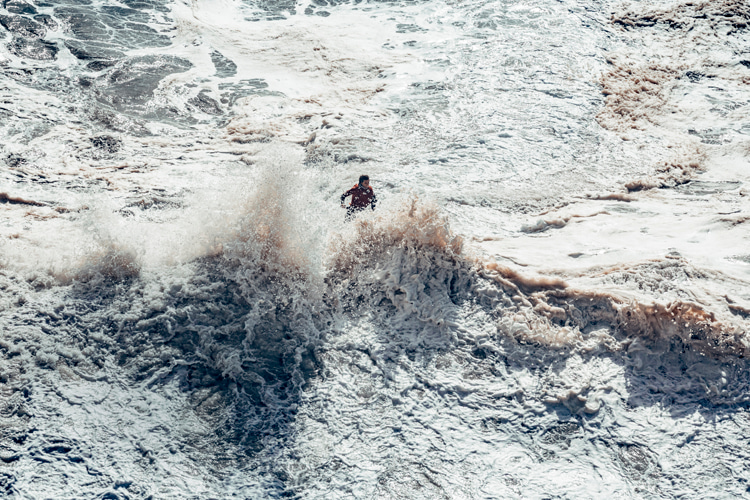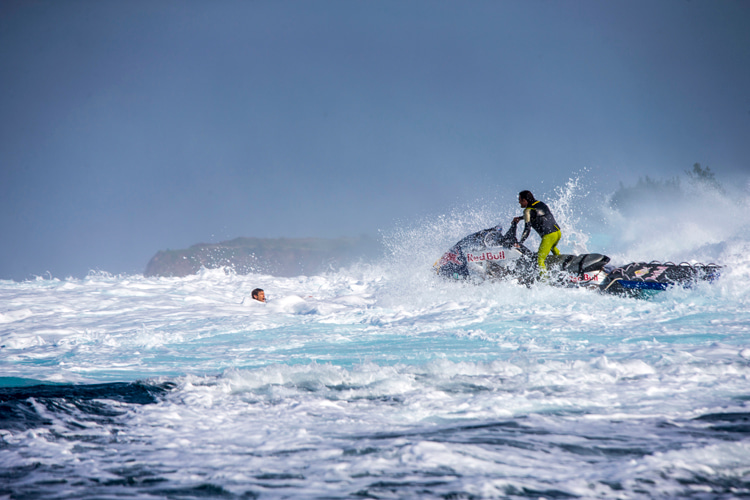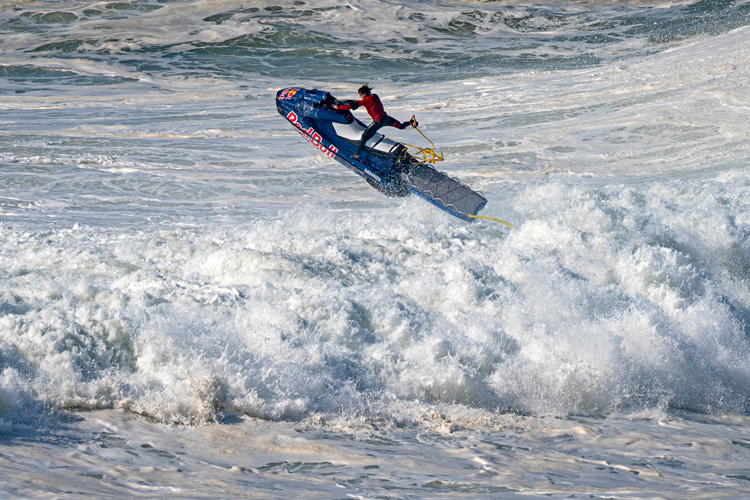Big wave surfing is a death-defying subdiscipline where experienced athletes ride huge waves, typically at least 20 feet (6.2 meters) high.
Consequently, big-wave surfers prepare physically and mentally for the world's largest waves in several ways.
Physical preparation often involves training the body through exercises that improve lung capacity, cardiovascular health, and oxygen efficiency.
The training can include activities such as breath training and yoga.
Mental preparation involves learning to embrace fear and rigorously preparing for the worst-case scenario so the surfer knows what to do in difficult situations.
The psychological work can involve visualization, meditation, and other mental exercises.
Big wave surfers may also prepare by learning about the specific waves and conditions they will be surfing and practicing with smaller waves before attempting larger ones.
However, Mother Nature is sometimes way too mighty for the human spirit, and surfers find themselves in life-or-death situations.

A Ticking Time Bomb
One of the questions that arise is how long someone can be underwater.
It is not possible to determine the exact length of time that someone can be underwater without the risk of drowning.
It can vary depending on several factors, including age and physical condition.
The average adult can hold their breath for around 30 seconds.
If a person is in excellent health and has training for underwater emergencies, they may be able to hold their breath for longer.
Big wave surfers, alongside freedivers, are the most prepared humans on Earth when it comes to breath-holding for over a minute.
Nevertheless, extreme water sports participants will always be left unconscious in the heavy surf zone whenever a significant impact on the head or a cardiac event occurs.
And that's when jet ski drivers come into play and save lives.

The Search-And-Rescue Technique
But how do personal watercraft (PWC) pilots rescue surfers in tricky situations? And how do they manage to dodge the incoming waves?
Jet skis are used to rescue surfers in big wave surfing by approaching the surfer who is in distress and picking them up with the help of a rescue sled or harness attached to the motor-powered device.
The driver will transport the surfer back to shore or a safer location.
In some cases, the surfer may be struggling to stay afloat in rough water conditions or may have been held underwater by the force of a breaking wave, also known as a "hold-down."
As you can see in the video below, the jet ski driver approaches the surfer struggling to stay afloat in the big waves and uses a rescue sled to lift the surfer out of the water and onto the back of the PWC.
Jet ski drivers may use their knowledge of surfing and wave patterns to anticipate the movement of incoming waves and position the PWC in a way that allows them to effectively rescue the surfer without being hit by the waves.
Most of them carry walkie-talkies - or similar handheld transceivers (HT) - to communicate with spotters or other people with better observation angles of the surf arena.
PWC pilots must have the necessary training and experience to operate the jet ski safely and be aware of their own abilities and the potential risks of the rescue situation.
The driver then transports the surfer back to safety, where lifeguards and paramedics can assess the severity of the injury.
Jet skis are a valuable tool for rescue in big wave surfing because they can navigate through heavy waters and reach the surfer quickly.
Nevertheless, surfers need to be aware of their abilities and the potential risks of surfing big waves and take necessary precautions to ensure their safety, including knowing the location of rescue personnel and equipment and having a plan in case of an emergency.
Do you need a license to drive a jet ski? Yes, in most countries, you need a special boating license or permit to operate a personal watercraft.
The Dangers at Stake
What exactly are the dangers involved in big wave surfing?
There are several dangers associated with big wave surfing, including:
- Brain injuries;
- Internal injuries;
- Ligament tears;
- Joint luxations and fractures;
- Drum perforations;
- Pnneumothoraxes;
- Drowning;
Big waves can also pose a risk of slamming surfers against the ocean floor, making it difficult to resurface or duck dive under the incoming waves.

The Goal: To Minimize All Risks
So, what can jet ski rescuers and big-wave surfers do to minimize the risk of drowning and death?
Several things can be done to minimize the risk of drowning and death. These may include:
- Seeking guidance from experienced surfers and following their advice: Big wave surfers need to seek guidance from more experienced surfers who can provide valuable advice on how to navigate the hazards of big wave surfing;
- Wearing appropriate safety gear: Wearing a wetsuit, helmet, and flotation device can help protect surfers from cold water and reduce the risk of injury;
- Knowing your limits and surfing within them: It is essential for surfers to be aware of their abilities and to surf within their limits to reduce the risk of injury or drowning;
- Team up with a jet ski rescuer: In big wave environments, each surfer should be supported and monitored by at least their tow-in partner;
- Having a plan in place in case of an emergency: Surfers should have a plan in place in case of an emergency, such as knowing the location of rescue personnel and equipment and having a way to communicate with them;
- Getting medical attention nearby: If a surfer is injured or experiences a hold-down, it is vital to seek medical attention as soon as possible;
- Participating in safety training and risk assessment programs: Big wave surfers may benefit from participating in safety training and risk assessment programs to understand better the hazards of big wave surfing and how to mitigate them;
Water safety plans can help mitigate death by drowning in big-wave surfing. Their action strategy should include the following:
- The selection of a surf zone;
- The exact location of medical and transfer boats;
- A series of jet ski search-and-rescue drivers;
- A team of out-of-the-water spotters;
- A helicopter;
- Health care equipment and professionals on land;
